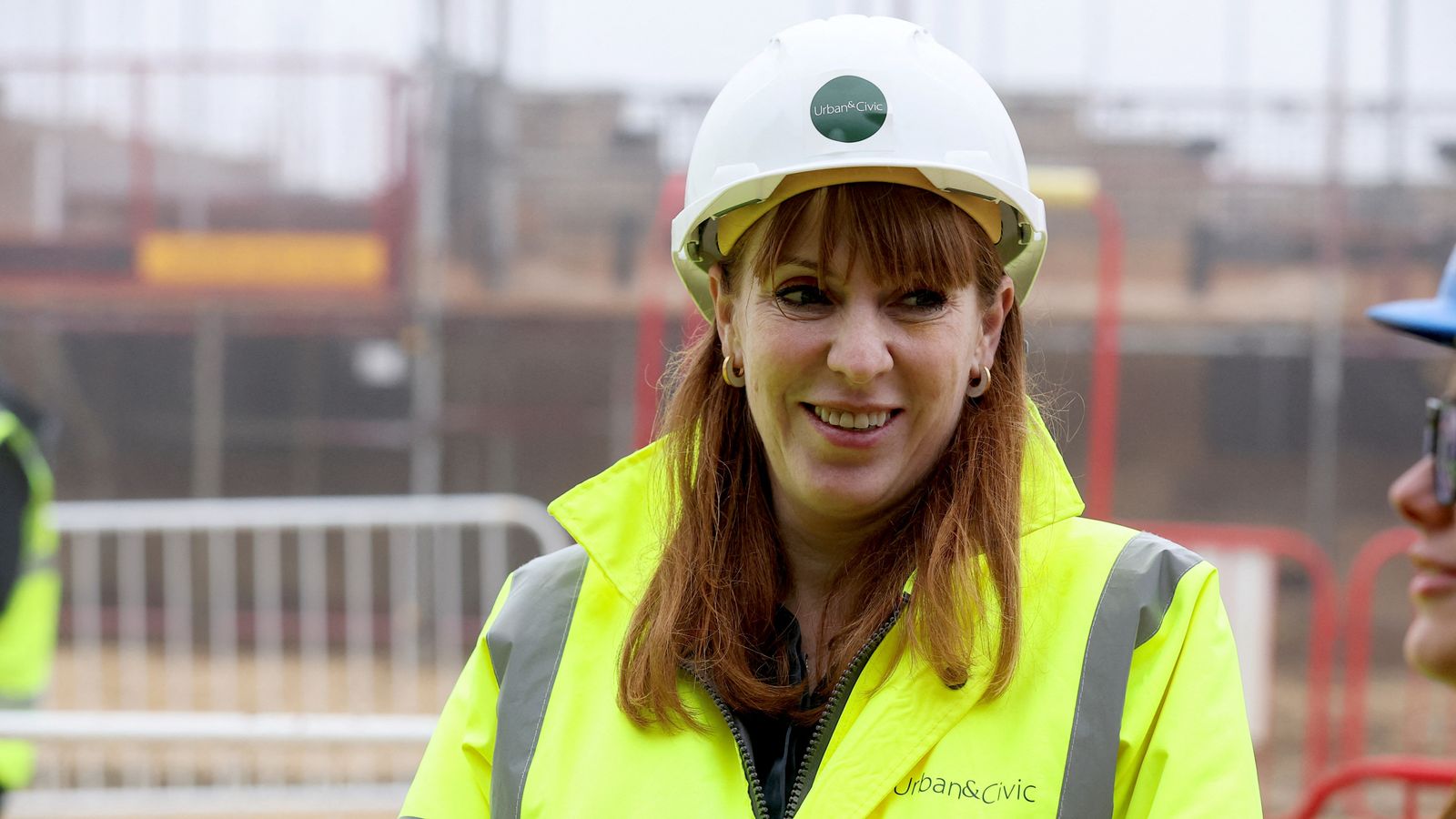U.K News
Angela Rayner insists 1.5m housing target can be met as extra £350m pledged for affordable homes

The Government’s Commitment to Building 1.5 Million Homes
The UK government has reaffirmed its ambitious target to build 1.5 million homes over the next five years, with Deputy Prime Minister Angela Rayner expressing her determination to meet this goal. Despite the significant challenges ahead, Rayner emphasized that the government cannot afford to fall short of this target, given the overwhelming demand for housing. She highlighted the pressing nature of the issue, noting that 1.3 million people are currently on housing waiting lists, and nearly every person in the country knows someone struggling to get on the housing ladder.
To support this effort, the government has announced an additional £350 million in funding for housebuilding. This includes £300 million allocated to the affordable homes program, which is expected to facilitate the construction of an extra 2,800 homes. More than half of these new homes will be designated for social rent, addressing the acute shortage of affordable housing. Additionally, a £50 million boost to the local authority housing fund is expected to deliver over 250 new council homes, providing much-needed relief to families in desperate need of stable housing.
The Scale of the Housing Crisis
The sheer scale of the housing crisis in the UK is stark. Currently, over 123,000 households are living in temporary accommodation, including nearly 160,000 children. This number is a stark reminder of the human cost of the housing shortage. Furthermore, almost 6,000 families with children are confined to bed and breakfast (B&B) accommodation, a situation that is both costly for local authorities and detrimental to the well-being of those affected.
The length of time families are forced to stay in temporary accommodation has increased significantly since 2021, with some areas, particularly in London and the South East, seeing average stays of up to five and a half years. This prolonged instability has profound implications for children’s education, health, and life chances. The situation is so dire that MPs on the Public Accounts Committee (PAC) have warned that local authorities are being pushed to breaking point due to the lack of affordable housing.
Funding and Plans to Tackle the Crisis
The additional £350 million pledged by the government is part of a broader effort to address the housing crisis. This funding comes on top of the £500 million already allocated for affordable housing in the October budget. While this investment is a step in the right direction, housing charity Shelter estimates that at least 90,000 social rent homes need to be built each year for the next decade to clear most social housing waiting lists in England and house every homeless household.
Rayner has expressed confidence that the measures being taken will unlock the construction of thousands more council and social homes. She emphasized the government’s commitment to supporting councils that want to build more homes, acknowledging the significant financial and human cost of temporary accommodation. For instance, the £50 million boost to the local authority housing fund is expected to pave the way for over 250 additional council homes, providing a lifeline for families in desperate need.
Case Studies and the Impact of Inadequate Housing
The human cost of the housing crisis is perhaps best illustrated by the tragic story of Awaab Ishak, a two-year-old boy who died in 2020 due to prolonged exposure to mould in his family’s social housing. This case has led to a new law, set to be phased in from October, which will require social landlords to investigate and fix hazards within a set timescale. The legislation is a direct response to the unacceptable living conditions faced by many tenants in social housing.
Meanwhile, the government has also announced plans to crack down on rogue landlords who exploit vulnerable tenants. These landlords often provide substandard housing while claiming uncapped housing benefits, placing an additional burden on the taxpayer. By addressing such exploitative behavior, the government hopes to ensure that tenants receive decent housing and that public funds are used more effectively.
The Road Ahead: Challenges and Opportunities
While the government’s funding commitments and policy measures are welcome, the road ahead remains fraught with challenges. The demand for housing far outstrips supply, and the legacy of decades of underinvestment in social housing will not be resolved overnight. However, the government’s determination to meet the 1.5 million homes target offers a glimmer of hope for those stuck on housing waiting lists or living in temporary accommodation.
Rayner’s commitment to turning the tide in favor of families in need is clear. She has acknowledged the enormity of the task but remains resolute in her belief that the target is achievable. By combining increased funding, supportive policies, and a focus on social housing, the government aims to make a meaningful difference in the lives of millions of people. The coming years will be critical in determining whether these efforts will succeed in addressing the housing crisis and providing the homes that so many desperately need.